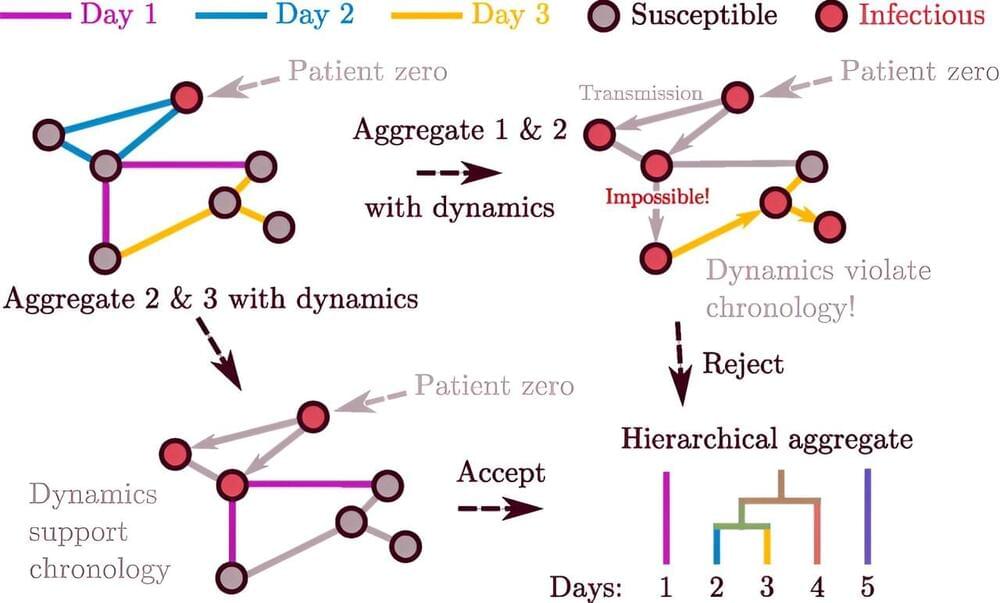Networks can represent changing systems, like the spread of an epidemic or the growth of groups in a population of people. But the structure of these networks can change, too, as links appear or vanish over time. To better understand these changes, researchers often study a series of static “snapshots” that capture the structure of the network during a short duration.
Network theorists have sought ways to combine these snapshots. In a new paper in Physical Review Letters, a trio of SFI-affiliated researchers describe a novel way to aggregate static snapshots into smaller clusters of networks while still preserving the dynamic nature of the system. Their method, inspired by an idea from quantum mechanics, involves testing successive pairs of network snapshots to find those for which a combination would result in the smallest effect on the dynamics of the system—and then combining them.
Importantly, it can determine how to simplify the history of the network’s structure as much as possible while maintaining accuracy. The math behind the method is fairly simple, says lead author Andrea Allen, now a data scientist at Children’s Hospital of Philadelphia.
